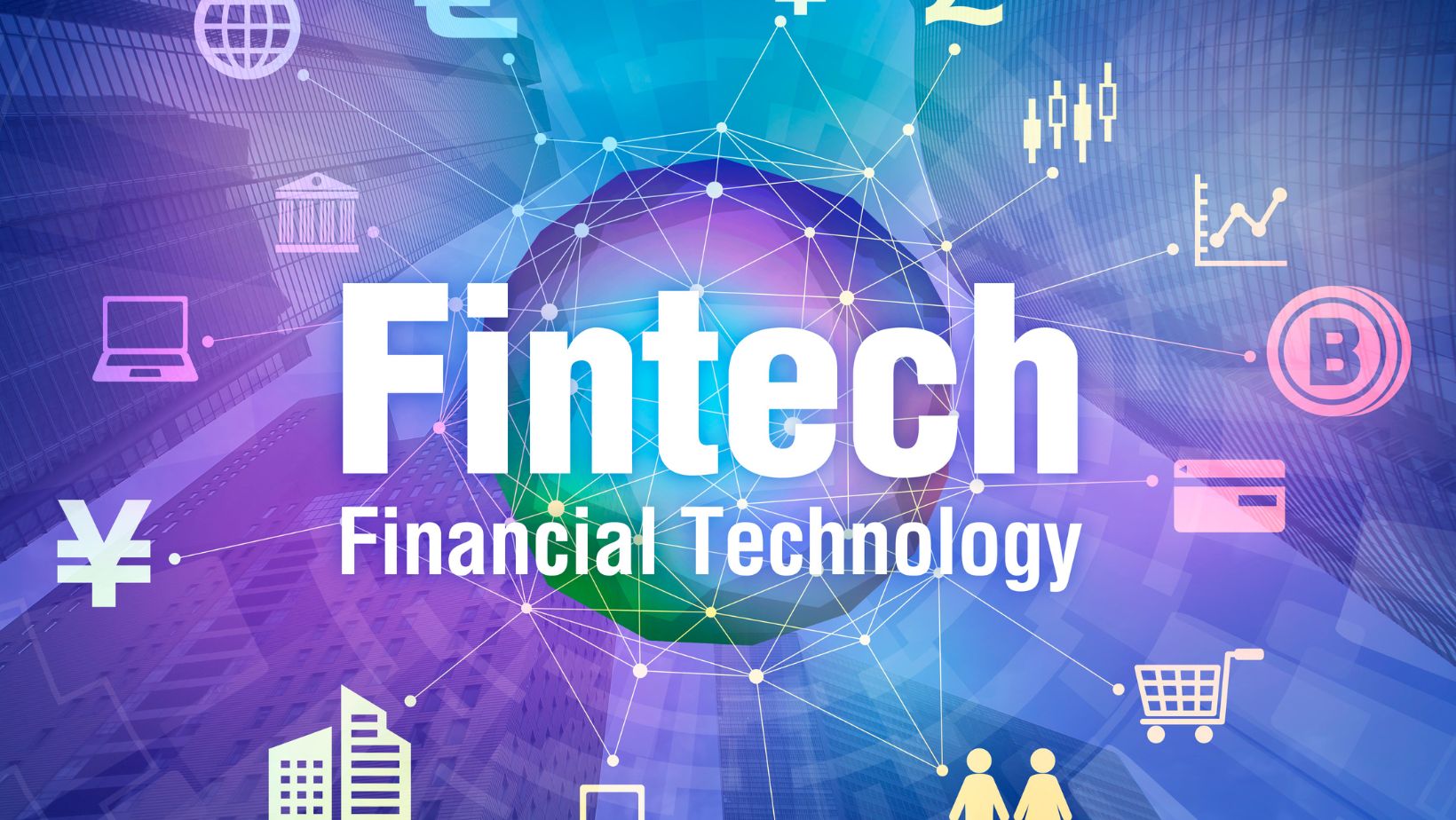The FinTech industry has seen impressive growth over the past few years. And the way we interact with our finances has changed as well. In this swiftly evolving landscape of financial services, staying ahead of the game requires not just innovation but a rapid embrace of digital transformation. This is where the role of a fintech software development company becomes crucial. These specialized firms are crafting solutions that allow businesses and consumers alike to navigate the complexities of the modern financial world with ease. With the support of these companies, the financial sector is able to offer more efficient, secure, and user-friendly services.
This article aims to provide you with a comprehensive understanding of the FinTech industry and its impact on the world. Keep reading, and you will gain useful insights.
What Is FinTech?
FinTech is a blend of the words “financial” and “technology” into one. It refers to any app, software, or technology that allows people or businesses to get a digital handle on their money. Whether it’s checking balances, moving money around, or getting savvy financial insights, FinTech is all about doing it online.
Fintech Statista:
- Statista reveals that the largest market will be Digital Assets, with an AUM of US$80.08bn in 2024.
- According to KPMG global FinTech investment reached a record high of $105 billion in 2020, despite the pandemic.
- The global online lending market is expected to grow at a CAGR of 20.3% from 2020 to 2027, according to Allied Market Research.
- Statista predicts that in the Digital Payments market, the number of users is expected to amount to 4,805.00m users by 2028.
FinTech`s Benefits for Consumers
FinTech companies offer a suite of benefits that truly make a difference in people’s lives. Here is a list of some of them.
- Save time
- Save money
- Helps control finance
- Reduce fear and stress of managing finances
- Help to recover from financial mistakes.
FinTech companies aren’t just digitizing money transactions. They use a holistic approach that saves time and money, enhances control over finances, and a much-needed reduction in the stress associated with managing money. FinTech is about providing a foundation to not only recover from financial missteps, but also to build a more secure and informed financial future.
How Does FinTech Work?
FinTech utilizes software, algorithms, and applications across various platforms, including mobile phones, to deliver a wide range of financial activities, from banking and investing to payments and lending.
The Core Elements of FinTech

Mobile and online platforms
FinTech firms operate through mobile and online platforms. That’s why it`it’ss easy for you to manage your money, whether you’re on your phone or your laptop.
Data analytics and machine learning
Fintech companies use the power of data analytics and machine learning to make smart decisions on things like who gets a loan, how to spot fraud, and ways to manage risk.
Application Programming Interfaces (APIs)
By using Application Programming Interfaces, or APIs, FinTech firms can tap into data from traditional banks and weave new services and products into the existing financial fabric, making everything more interconnected.
Digital Payments
With FinTech, paying for things has never been easier or cooler. From tapping your phone to pay at the store to sending money across the globe with digital wallets and blockchain, these solutions are all about speed, convenience, and security.
Robo-advisors
These digital guides use algorithms and data crunching to offer personalized investment advice without the hefty fees.
Cybersecurity
FinTech firms use the latest in encryption and authentication tech to guard your information like a digital fortress, ensuring your money and identity stay secure.
Types of FinTech
Fintech involves a wide variety of applications in the peer-to-peer (P2P), business-to-business (B2B), and business-to-consumer (B2C) domains. We are going to explore just a few of them that are changing the financial services industry.
Fintech Banks
A FinTech bank or neobank is always a digital-first financial company that doesn’t have a physical office. But at the same time, it provides banking services like debit cards and checking accounts. Neobank, digital bank, and FinTech bank are terms that are frequently used interchangeably. Neobanks provide financial services in a customer-focused, digital-only style with the goal of streamlining the banking process.
According to Statista, one of the most popular FinTech banks in 2022 were Revolut, Chime, Varo, SoFi.
Digital Payments
After the pandemic, we can see the rise of cashless payments. More and more people are embracing digital transactions. According to a Pew Research Center survey, 41% of Americans now make all their weekly payments online. As a result, we can see the rising popularity of payment apps and services. This is due to the cost-effectiveness of receiving payments through direct bank transfers compared to credit cards. Additionally, signing up and authenticating users for these services has become quicker and simpler, making digital payments more accessible and convenient than ever.
Personal Financial Management (PFM)
These services improve your financial management. PFM apps make it simpler to keep track of your money by combining financial data from multiple accounts into a single dashboard. For example, Dave, Brigit, and Copilot.
Wealth Management
They are revolutionizing the way financial advisors and wealth management platforms manage and grow their assets under management (AUM). They make it easier to consolidate information from external accounts, providing a fuller view of a client’s financial situation. This, in turn, enables more comprehensive and effective financial guidance. For instance, Atom Finance has tools that allow users to monitor and research their investments from a single dashboard. Similarly, Stash offers a subscription-based service that opens up a world of investment opportunities, educational resources, and financial advice. And it is all designed to be both easy to use and budget-friendly.
Fintech Lenders
They specialize in offering loans and credit facilities directly to consumers and businesses through digital platforms. Unlike traditional banks, fintech lenders typically offer a more user-friendly online experience.

It means that you face less paperwork, faster approval times, and more flexible lending criteria. This approach makes access to finance more inclusive. It also significantly speeds up the process of borrowing money, addressing the needs of those who may not be well-served by conventional banking institutions.
Top fintech lenders are SoFi, Prosper, and SoLo. They provide consumer-friendly loan options, for example, new loan types such as peer-to-peer loans.
Embedded Finance
It is a seamless integration of financial services within the products or services of non-financial companies. This approach leverages fintech to embed services like payments, lending, insurance, and banking functionalities directly into digital platforms or apps, enhancing the user experience by providing a more seamless and convenient interaction.
It is expected that embedded finance services will produce $230 billion in revenue in 2025—a 10-fold increase over 2020. Impressive, isn’t it?
The Impact of FinTech Companies in Transforming Financial Services
FinTech is making finance more inclusive and social as well. It uses the power of technology to redefine traditional banking and investment models, introducing digital-first solutions. It all helps to cater to the modern consumer’s needs. From mobile banking apps that offer 24/7 access to financial accounts to peer-to-peer payment platforms making money transfers seamless and robo-advisors providing personalized investment strategies, FinTech is changing people’s lives. Consumers are now able to take actions that were previously more challenging (like investing in a phone). It’s clearing the path for a future that is more egalitarian and free from financial constraints as a result. Now, Plaid’s analysis reveals that over 60% of consumers handle their finances digitally.
Bottom Line
FinTech has touched every facet of financial services, making them more accessible, efficient, and secure for everyone. Its impact is only set to deepen. As technology continues to evolve, so too will the ways we interact with our finances, promising a future where financial empowerment and inclusivity are within everyone’s reach. Whether you’re managing personal finances, running a business, or simply looking to understand the FinTech phenomenon, the journey into the world of financial technology offers endless opportunities for growth, innovation, and advancement.


